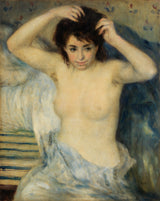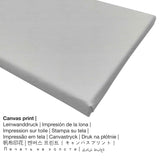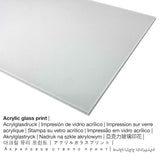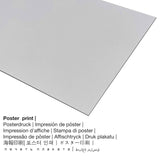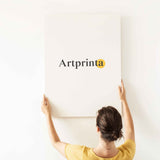Pierre-Auguste Renoir, 1875 - Before the Bath (Avant le bain) - bản in mỹ thuật
Đã bao gồm thuế. Vận chuyển được tính lúc thanh toán.
Tóm tắt bản sao
T nghệ thuật hiện đại kiệt tác được gọi là Before the Bath (Avant le bain) được thực hiện bởi họa sĩ người Pháp Pierre-Auguste Renoir in 1875. Qua 140 năm tuổi ban đầu có kích thước như sau: Tổng thể: 32 5/16 x 26 3/16 inch (82 x 66,5 cm). Dầu trên vải was applied by the artist as the medium of the piece of art. This artwork is part of the Quỹ Barnes bộ sưu tập. Với sự lịch sự của Phép lịch sự của Quỹ Barnes, Merion và Philadelphia, Pennsylvania (giấy phép - miền công cộng): . Bên cạnh đó, sự liên kết của việc tái tạo kỹ thuật số là chân dung và có tỷ lệ 1: 1.2, có nghĩa là chiều dài ngắn hơn 20% so với chiều rộng. The illustrator, painter, sculptor Pierre-Auguste Renoir was a European artist, whose art style can be attributed mainly to Impressionism. The European painter was born in the year 1841 in Limoges, Nouvelle-Aquitaine, France and deceased at the age of 78 vào năm 1919 tại Cagnes-sur-Mer, Provence-Alpes-Cote d'Azur, Pháp.
Mô tả bổ sung của Barnes Foundation (© - Quỹ Barnes - Quỹ Barnes)
Before the Bath is one of 19 paintings Renoir offered for sale in a scandalous public auction at Hotel Drouot on March 23–24, 1875. Organized by Galerie Durand-Ruel, the auction included new works by Renoir, Monet, Morisot, and Sisley; so controversial were the canvases on view that the public became almost violent. As Paul Durand-Ruel recalled years later, the sale "provoked incredible scenes. The day of the viewing and during the sale, [we] had to call the police in order to prevent small altercations from degenerating into full-fledged battles. The public, incensed by the rare supporters, wanted to stop the sale and howled at each bid". It is hard to imagine that a subtle painting like Before the Bath at one time provoked fistfights. At first glance, it has little of the radicalism of a work such as Study, Nude in Sunlight (Musée d'Orsay), another half-length nude that would cause uproars at the 1876 impressionist exhibition for its bold colors and disruptive splotches of sunlight playing across the flesh. Here, indoors, Renoir's focus is on the body itself rather than on the play of light across it. The moment presented is a private one: the figure undresses for bathing, the shallow space and up-close focus adding to the feeling of intimacy. Her raised arms form a perfect triangular frame around her face, which wears a serene expression. The palette is fairly subdued and the modeling of the figure's torso is strong, with subtle tonal modulations producing rounded forms, especially in the arms and under the breasts. With her sculpted forms and falling garment, she evokes such classical sculpture as the Venus de Milo.This evocation may be precisely what offended about the picture. For superimposed onto this classical frame are signs of the everyday. The hair is unkempt, and rumpled bedcovers can be glimpsed in the background. The raised arms reveal hair in the armpits—a detail which audiences in 1875 were not accustomed to seeing—and the facial features, while attractive, are not idealized: she looks too much like an ordinary Parisian woman. Theodore Duret wrote admiringly about this aspect of Renoir's nudes: "Instead of looking up to beings which represented human nature as perfectly beautiful, he was looking at ordinary creatures, his women were such as one could meet anywhere, he had made no selection." Indeed, it was Duret who had purchased the painting at the 1875 sale, through Henri Hecht, for the small sum of 140 francs. Yet Duret's enthusiasm was hardly typical; for most viewers the painting must have seemed a strange confusion of the real and the ideal.While the painting has the voyeuristic feel of having entered into this woman's private space, we know very well that Renoir set up this scenario in his studio. The patterned wallpaper in the background is from his apartment in the rue Saint-Georges, and can be seen also in the portrait of Jeanne Durand-Ruel (BF950). The model is possibly Henriette Henriot, who posed for so many of Renoir's pictures around this time; see Parisienne (National Museum Wales). Though the hair on this model is darker than the notorious red mane seen in other representations of Henriot, the face, especially the nose and mouth, is strikingly similar to her appearance in Parisienne. By the time Before the Bath was featured in a 1912 exhibition in Durand-Ruel's New York gallery, it was one of Renoir's most celebrated works. Critics such as Octave Mirbeau had earlier praised its "strong drawing," calling it "one of the best pieces of modern painting." Durand-Ruel, who had purchased the painting at the Duret sale in 1894, marveled over the increase in its value over the course of a few decades. Barnes went several times to New York to see the Renoirs in the 1912 exhibition. Struck by this picture in particular, he inquired about its price, only to be told in a letter from one of the Durand-Ruel sons that it was not for sale. Barnes succeeded in securing the picture a few weeks later, in April 1912, much to the delight of American critics such as James Huneker, who raved about its "glowing, nacreous flesh tones [and] its admirable modeling" in the New York Sun. "Luckily," he continued, "the canvas is now in the collection of an American not many hours from New York."
Thông tin có cấu trúc về tác phẩm nghệ thuật
| Tên tác phẩm: | "Before the Bath (Avant le bain)" |
| Phân loại tác phẩm: | bức tranh |
| Phân loại nghệ thuật: | nghệ thuật hiện đại |
| Thời gian: | 19th thế kỷ |
| Được tạo vào năm: | 1875 |
| Tuổi tác phẩm: | hơn 140 tuổi |
| Phương tiện gốc của tác phẩm nghệ thuật: | dầu trên vải |
| Kích thước của tác phẩm nghệ thuật gốc: | Tổng thể: 32 5/16 x 26 3/16 inch (82 x 66,5 cm) |
| Bảo tàng / địa điểm: | Quỹ Barnes |
| Vị trí bảo tàng: | Philadelphia, Pennsylvania, Hợp chủng quốc Hoa Kỳ |
| Có sẵn dưới: | Quỹ Barnes |
| Giấy phép: | phạm vi công cộng |
| Được phép của: | Phép lịch sự của Quỹ Barnes, Merion và Philadelphia, Pennsylvania |
Bảng tóm tắt nghệ sĩ
| Tên của nghệ sĩ: | Pierre-Auguste Renoir |
| Tên bổ sung: | renoir p.a., Pierre Auguste Renoir, Renoir Pierre-Auguste, Renuar Ogi︠u︡st, רנואר פייר אוגוסט, Renoir August, Renoir Auguste, p.a. renoir, renoir a., firmin auguste renoir, a. renoir, Renoir Pierre Auguste, Renoir Pierre August, Renoar Pjer-Ogist, רנואר אוגוסט, August Renoir, Auguste Renoir, Renoir, pierre august renoir, Pierre-Auguste Renoir |
| Giới Tính: | Nam giới |
| Quốc tịch nghệ sĩ: | Tiếng Pháp |
| Nghề nghiệp của nghệ sĩ: | nhà điêu khắc, họa sĩ minh họa, họa sĩ |
| Nước xuất xứ: | Nước pháp |
| Thể loại nghệ sĩ: | nghệ sĩ hiện đại |
| Phong cách nghệ thuật: | Ấn tượng |
| Tuổi khi chết: | 78 năm |
| Năm sinh: | 1841 |
| Quê quán: | Limoges, Nouvelle-Aquitaine, Pháp |
| Năm chết: | 1919 |
| Thị trấn chết chóc: | Cagnes-sur-Mer, Provence-Alpes-Cote d'Azur, Pháp |
Nhận tài liệu sản phẩm yêu thích của bạn
Chúng tôi cung cấp một loạt các kích cỡ và vật liệu khác nhau cho mọi sản phẩm. Chúng tôi cho phép bạn chọn trong số các biến thể sau:
- In trên kính acrylic (với lớp phủ kính thật): The print on acrylic glass, often referenced as a UV print on plexiglass, will turn the original into gorgeous wall décor and is a good alternative to aluminium and canvas fine art prints.
- Poster (chất liệu bạt): The poster is a UV printed sheet of flat canvas paper with a nice surface finish, that resembles the original masterpiece. It is ideally suited for putting the art print in a customized frame. Please note, that depending on the size of the poster we add a white margin of something between 2-6cm around the print, which facilitates the framing with a custom frame.
- Nhôm dibond: This is a metal print manufactured on aluminium dibond with an outstanding depth effect. The non-reflective surface structure make a fashionable impression. The Direct Print on Aluminum Dibond is your excellent start to the sophisticated world of art replicas on aluminum.
- Tranh sơn dầu: The printed canvas material stretched on a wood frame. The advantage of canvas prints is that they are relatively low in weight, meaning that it is easy and straightforward to hang up the Canvas print without additional wall-mounts. A canvas print is suitable for all types of walls.
Chi tiết mặt hàng có cấu trúc
| Phân loại sản phẩm: | in mỹ thuật |
| Sinh sản: | sao chép ở định dạng kỹ thuật số |
| Phương pháp sản xuất: | In trực tiếp UV (in kỹ thuật số) |
| Xuất xứ của sản phẩm: | Nước Đức |
| Loại cổ phiếu: | sản xuất theo yêu cầu |
| Đề xuất sử dụng sản phẩm: | nghệ thuật treo tường, bộ sưu tập nghệ thuật (sao chép) |
| Định hướng của hình ảnh: | định dạng chân dung |
| Tỷ lệ bên: | 1 : 1.2 chiều dài đến chiều rộng |
| Giải thích tỷ lệ khung hình ảnh: | chiều dài ngắn hơn 20% so với chiều rộng |
| Vật liệu bạn có thể chọn: | in canvas, in kim loại (nhôm dibond), in áp phích (giấy canvas), in kính acrylic (với lớp phủ thủy tinh thật) |
| Các biến thể kích thước in canvas (vải trên khung cáng): | 50x60cm - 20x24", 100x120cm - 39x47", 150x180cm - 59x71" |
| Kích thước bản in trên kính acrylic (với lớp phủ kính thật): | 50x60cm - 20x24", 100x120cm - 39x47" |
| In áp phích (giấy canvas): | 50x60cm - 20x24", 100x120cm - 39x47" |
| Tùy chọn kích thước bản in nhôm (vật liệu nhôm dibond): | 50x60cm - 20x24", 100x120cm - 39x47" |
| Khung in nghệ thuật: | không bao gồm |
Lưu ý pháp lý quan trọng: We try whatever we can in order to depict our products as accurately as it is possible and to exhibit them visually in our shop. Still, the pigments of the printed materials, as well as the print result might differ slightly from the presentation on the monitor. Depending on the settings of your screen and the nature of the surface, colors might not be printed one hundret percent realistically. Since all our art reproductions are printed and processed by hand, there might also be slight deviations in the exact position and the size of the motif.
Văn bản này được bảo vệ bởi bản quyền © - www.artprinta.com (Artprinta)

